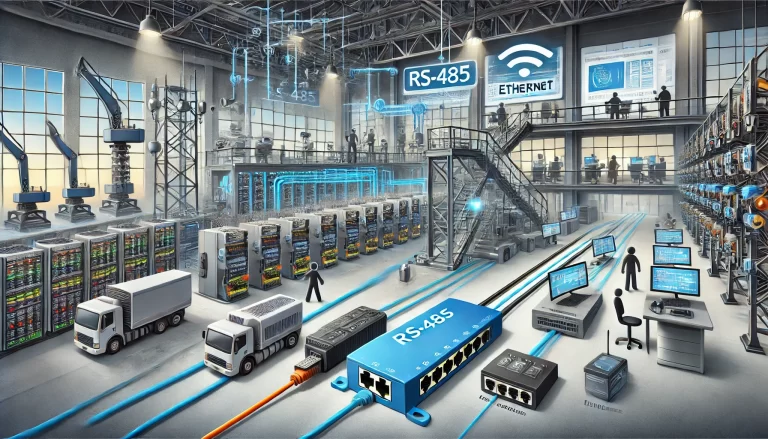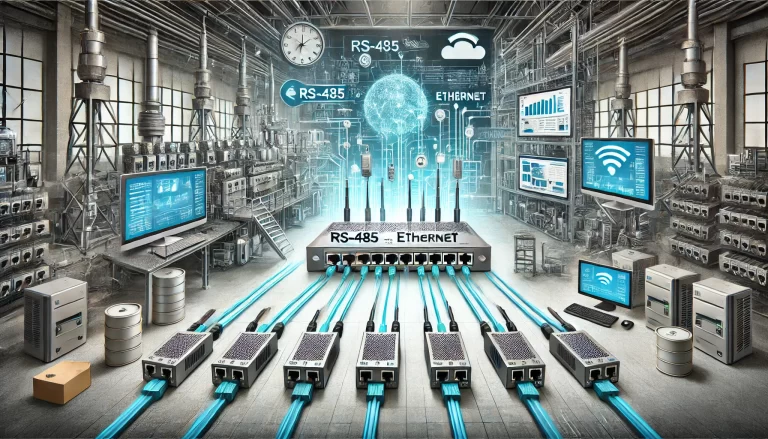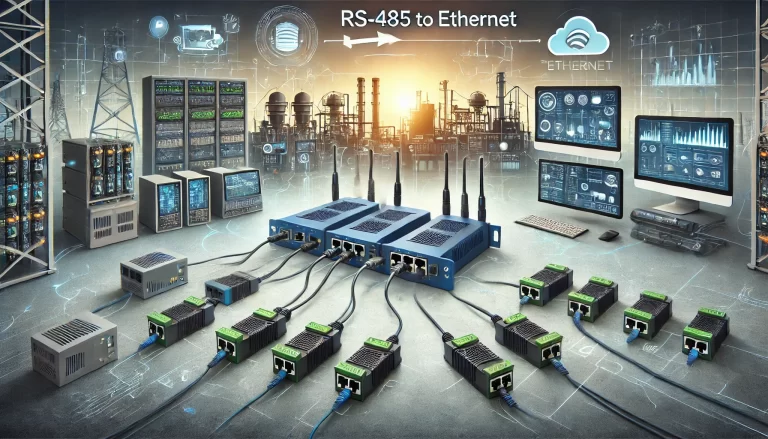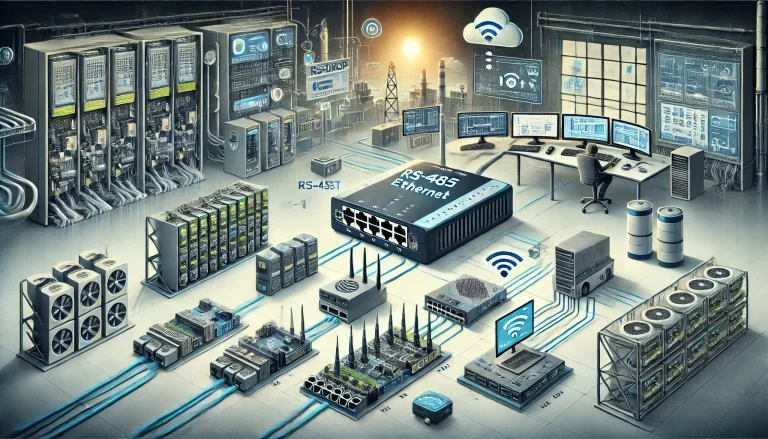RS-485, also known as Recommended Standard 485, is a widely used protocol for industrial communication and data transfer. It is often employed in environments that require robust and reliable serial communication, particularly over long distances and in harsh conditions. However, as Ethernet-based communication networks become more ubiquitous in industrial and commercial applications, there is increasing demand to integrate legacy RS-485 systems with modern Ethernet infrastructure. This article explores why and how RS-485 is converted to Ethernet, and what benefits this conversion brings.

What is RS-485?
RS-485 is a serial communication standard that operates in half-duplex mode, meaning data can be sent and received, but not at the same time. It supports multi-drop communication, meaning multiple devices can be connected to the same bus, and it is known for its ability to transmit data over long distances—up to 1,200 meters—with a high degree of noise immunity. This makes it a popular choice in industrial settings, such as factory automation, building control systems, and sensor networks.
However, RS-485 is limited in certain aspects. It generally supports lower data rates compared to modern networking protocols like Ethernet, and its addressing capability is limited, requiring more complex configurations to handle large networks. This is where Ethernet comes in, offering a broader, faster, and more versatile solution.

Why Convert RS-485 to Ethernet?
Improved Network Compatibility
Ethernet is the dominant communication standard in most modern networking environments, including industrial settings. By converting RS-485 to Ethernet, older devices that still use RS-485 can be integrated into a broader Ethernet-based system. This integration allows for more flexibility in network design and device management. Ethernet’s compatibility with various higher-level protocols like TCP/IP means RS-485 devices can communicate seamlessly with other systems across the internet or private networks.
2. Extended Communication Range
While RS-485 is known for its long-distance communication capabilities, Ethernet offers even greater flexibility in terms of expanding the network. With Ethernet switches, routers, and even fiber optics, the communication distance can be extended well beyond RS-485’s limits. Ethernet also offers a range of options for wireless communication, making it easier to incorporate remote devices that may be in hard-to-reach locations.
3. Higher Data Transfer Rates
RS-485 operates at slower speeds compared to Ethernet. While typical RS-485 baud rates range from 1.2 kbps to 10 Mbps, Ethernet can provide speeds starting from 10 Mbps and can scale up to 1 Gbps or higher. For applications where high-speed data transfer is critical, such as in real-time monitoring, video surveillance, or large-scale data collection, converting RS-485 to Ethernet allows for faster, more efficient communication.
4. Easier Integration with Modern Systems
Converting RS-485 to Ethernet allows for easier integration with SCADA (Supervisory Control and Data Acquisition) systems, IoT (Internet of Things) devices, and cloud-based platforms. This opens up new opportunities for remote monitoring, predictive maintenance, and even automation in industrial settings. Ethernet networks are inherently scalable, so adding more devices or expanding the system can be done without needing to reconfigure the entire network.
5. Multi-device Communication with IP Addresses
One of the limitations of RS-485 is its relatively simple addressing scheme. When multiple devices are connected to the same RS-485 bus, each device needs to be manually addressed and managed, which can become complicated in large systems. Ethernet, on the other hand, uses IP addressing, allowing each device to have its unique address, simplifying communication and management in large, complex systems. This is particularly useful in distributed control systems where thousands of devices need to communicate efficiently.

6. Remote Monitoring and Control
Ethernet networks can be accessed remotely, enabling real-time monitoring and control of devices from virtually anywhere with an internet connection. By converting RS-485 to Ethernet, legacy systems can take advantage of modern management tools, including cloud-based dashboards, remote diagnostics, and even control systems via smartphones or tablets. This is particularly valuable for geographically dispersed operations, such as oil and gas pipelines, water treatment facilities, or renewable energy farms.
How is RS-485 Converted to Ethernet?
The most common way to convert RS-485 to Ethernet is by using a RS-485 to Ethernet converter or gateway. These devices bridge the communication gap between the two protocols by translating RS-485 signals into Ethernet packets and vice versa. The basic functionality of these converters includes:
- Signal Conversion: Translating RS-485 serial data into Ethernet frames that can be transmitted over the network.
- Addressing: Assigning IP addresses to RS-485 devices, so they can be accessed over an Ethernet network.
- Protocol Translation: Supporting various communication protocols to ensure compatibility between RS-485 devices and the Ethernet network.
Some converters also support advanced features, such as virtual COM ports, which allow legacy RS-485 devices to appear as if they are directly connected to a PC or server via a traditional serial port, while in fact communicating over Ethernet. These converters can also support Modbus RTU to Modbus TCP protocol conversion, which is essential in many industrial automation environments.

Conclusion
Converting RS-485 to Ethernet allows for the integration of older, reliable industrial systems with modern, high-speed Ethernet networks, offering greater flexibility, scalability, and control. By leveraging Ethernet’s speed, range, and protocol compatibility, organizations can ensure that their RS-485 devices remain functional in a world increasingly dominated by Ethernet-based communication. This conversion opens up new opportunities for remote monitoring, real-time control, and large-scale automation, making it a key step for any organization looking to modernize its communication infrastructure.
In an era where the Industrial Internet of Things (IIoT) and smart factories are becoming the standard, converting RS-485 to Ethernet is a practical and future-proof solution. Whether you’re managing a small-scale network of devices or a large, distributed system, this conversion ensures your infrastructure is ready to handle the demands of modern industrial communication.
